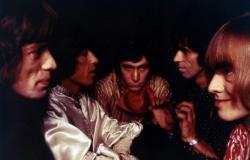Five texts contain stories, ideas and concepts that are fundamental for reflecting more deeply on what women’s sport is today.
“Fundamentals” deals with five topics related to sport practiced by women at a competitive level. The visibility achieved by athletes in recent years has highlighted how it is not possible to talk about women’s sport (not only professional) without freeing the narrative from a self-absorbed rhetoric in which women, in terms of performance and visibility, they are and will always be in second position compared to their male colleagues.
Giorgia Bernardini she is a sports writer
Olga Campofreda And researcher at the Institute of Advanced Studies in London
Elena Marinelli she is a sports writer
Tiziana Scalabrin teaches at the Department of Human Sciences of LUMSA University
Alessia Tuselli he is a research fellow at the Department of Sociology and Social Research of the University of Trento
From the Introduction (pp. 9-16)
The first Italian writer to approach sports journalism was Anna Maria Ortese, who in 1955 reported the Giro d’Italia for the «Europeo». The singularity of this presence is demonstrated by the fact that Ortese chose to bundle up with a headdress to hide her feminine features in an environment occupied mainly by men. In that historical period, hiding one’s appearance or changing it completely was not unusual for a woman trying to approach the world of sport. In 1966, for example, since women were forbidden to participate, Roberta Gibb showed up at the start of the Boston Marathon wearing her brother’s clothing, to go unnoticed and compete alongside the men. These are just two of the best-known examples of how women, both to play sport at a high level and to write about sport, have had to deal with the disappearance of themselves. A phenomenon that they are often called upon to deal with: in the family and work environment, but then in life in general, and which is also found in competitions, because sport is just one of the many mirrors of the society in which we live. There are, it is true, some exceptions, such as Anna Maria Ortese, who have traced an alternative path for women in sport. For example, there are journalists who have had wide visibility and have made the history of sports journalism in Italy, such as Emanuela Audisio on the pages of newspapers or Simona Ventura in television broadcasts, or even athletes who have filled pages in newspapers and had visibility on television , like Fiona May or Paola Egonu. But their role as “superstars” is still an extraordinary achievement, in the sense of out of the ordinary. It must be said and highlighted if we want to think about the context in which women still move in the world of sport today. Behind some famous personalities there are countless high-level athletes who train and win every day but remain in the background, condemned to the disinterest of the general public. Just as there are valid writers who seek space without finding it, as if sport and sports journalism were knowledge transmitted with DNA, male of course. Not to mention the times in which proposals on so-called “minor” sports are rejected by the editorial staff because “the topic is too specific and there is not a large enough audience. […] Yet the process should develop along the opposite track: it is not that a story is told because it already has an audience, but it is from the story that the audience that will want to know it is born. It is a short circuit that is valid in many areas but which too often affects the narrative of women’s sport. Moreover, the 2019 football World Cup in Paris, in which the Italian women’s national team reached the quarter-finals, demonstrated that there are large segments of the public willing to follow the lesser-known half of the sporting world, if what they see entertains and entertains.
[…] For the authors of Fundamentals, there is no other way of reading women’s sport other than keeping it on a level of equality compared to the men’s sport, maintaining and enhancing the peculiarities that characterize the former. These peculiarities are linked to being a woman or to individual athletes and provide new and interesting interpretations. This is why here, without claiming to be exhaustive, we have chosen to talk about certain topics and not others. To avoid any misunderstanding, lipstick and blood, sports bras, genital organs, emotions, hair styles, outfits, nail polish, are topics present in the texts we have written because they characterize athletes and their game , how long hair and t-shirts defined Andre Agassi and his tennis. Whether it is a field or a body, here the aim is to destroy the negative connotation that afflicts female athletes who express their personality on the field or with their female body, a negativity that does not exist in male sport. With Fundamentals we want to question the way of describing the sport on which we were trained. And we also want our work to be useful to those who come after us. Sara Gama’s lesson – each one makes her own little piece of the road and whoever comes after her carries on the battle – we must all make it our own.
From a grammatical point of view the term “fundamentals” is both a masculine noun and a feminine adjective. The fundamentals, the fundamentals. The reason why this collection of essays on women’s sport is called Fundamentals is that the two identity traits that we have chosen for our work coexist within a single signifier. Even before talking about the athletes or the stories that each one would have liked to tell, we thought long and hard about the desire to start from the basics, to return to the origins of sports storytelling. To the fundamentals, in fact.
Olga Campofreda, Elena Marinelli, Tiziana Scalabrin, Alessia Tuselli and I, authors of this text, are familiar with at least one sport. Some of us started practicing it as children and grew up adapting the various phases of our development around sporting activity. Others, however, began to become passionate about a sport in later life and only later began to dedicate themselves to it themselves. But despite the age at which each of us approached the sport, or sports, that we are passionate about, we have all gone through the phase in which we introject the fundamentals.
The fundamentals are those basic movements, or those sequences of movements, that distinguish a sport and differentiate it from all others. The block and shot in basketball, the forehand and backhand in tennis, the block and return in fencing. These are actions that an athlete must be able to repeat without any reflection, in an instinctive manner. They are called this because they are the cornerstones of a sport and without this zero degree there could be no Serena Williams, Ibtihaj Muhammad or Federica Pellegrini. Fundamentals are also the basis of fun.
The fundamental ones, however, are the athletes mentioned in this text, and also all those who were left out for obvious reasons of space. As mentioned, each of them, individually and as a team, was and is necessary for the growth of a movement that inspires us not only as sports enthusiasts, but as people who face society every day and try to understand and undermine its inequities. .
When I was asked to work on a book on women’s sport, it was completely natural as a curator to in turn propose to share this privileged space with four other women. It was a decision that I like to define as political, a choice that also responds to the limited space available for women who wish to write about sport. A book is an intellectual place that can only be shared if there is mutual trust.
In 2020 I launched Zarina, a newsletter that I had founded to write about women’s sport without having to deal with the “no” from magazines and newspapers and which over time has become a place of great experimentation. And it is thanks to Zarina that I met the other authors of this volume: each on her behalf, and then together, we took the first steps in sports narration, starting from common premises, reasoning about phenomena that were not even mentioned in newspapers. We therefore started with only the matches or individual performances of the athletes available. And it is precisely for this reason that the hours that each of us spent inside a field trying the fundamentals over and over again came in handy. In a certain sense, we have managed to become authors who write about sports precisely because we have practiced those same activities in life. We would not have been the writers we are if we had not walked on fields and athletics tracks, and perhaps we would have stopped much sooner in the face of difficulties if we had not all been tenacious or capable of keeping in mind that after a negative performance, negative ones generally follow. very positive. […]
Our five texts, of course, do not pretend to exhaust the discussion. If anything, their goal is to start a dialogue, start a discussion, inspire other sports writers and women to speak and write, in short to make themselves heard. The same topics we have chosen are constantly updated. During the gestation of the book, important events occurred, including the rulings on Caster Semenya, which changed the position of transgender and intersex people in competitions; a women’s football World Cup in Australia and New Zealand which made headlines not only for the game but also, thanks to the “Rubiales case”, because it brought to everyone’s attention how deeply rooted patriarchy is in inside certain sports environments; the 2023 edition of the US Open won by Coco Gauff, the first black tennis player to establish herself after the long domination of the Williams sisters. Our hope is that the considerations made in this book open up a perspective, make tools available to those who intend to approach both women’s and men’s sports on a theoretical level, without forgetting that, exactly as in every sporting discipline, it is after having introjected the fundamentals that it is possible to finally abandon yourself to fun.






